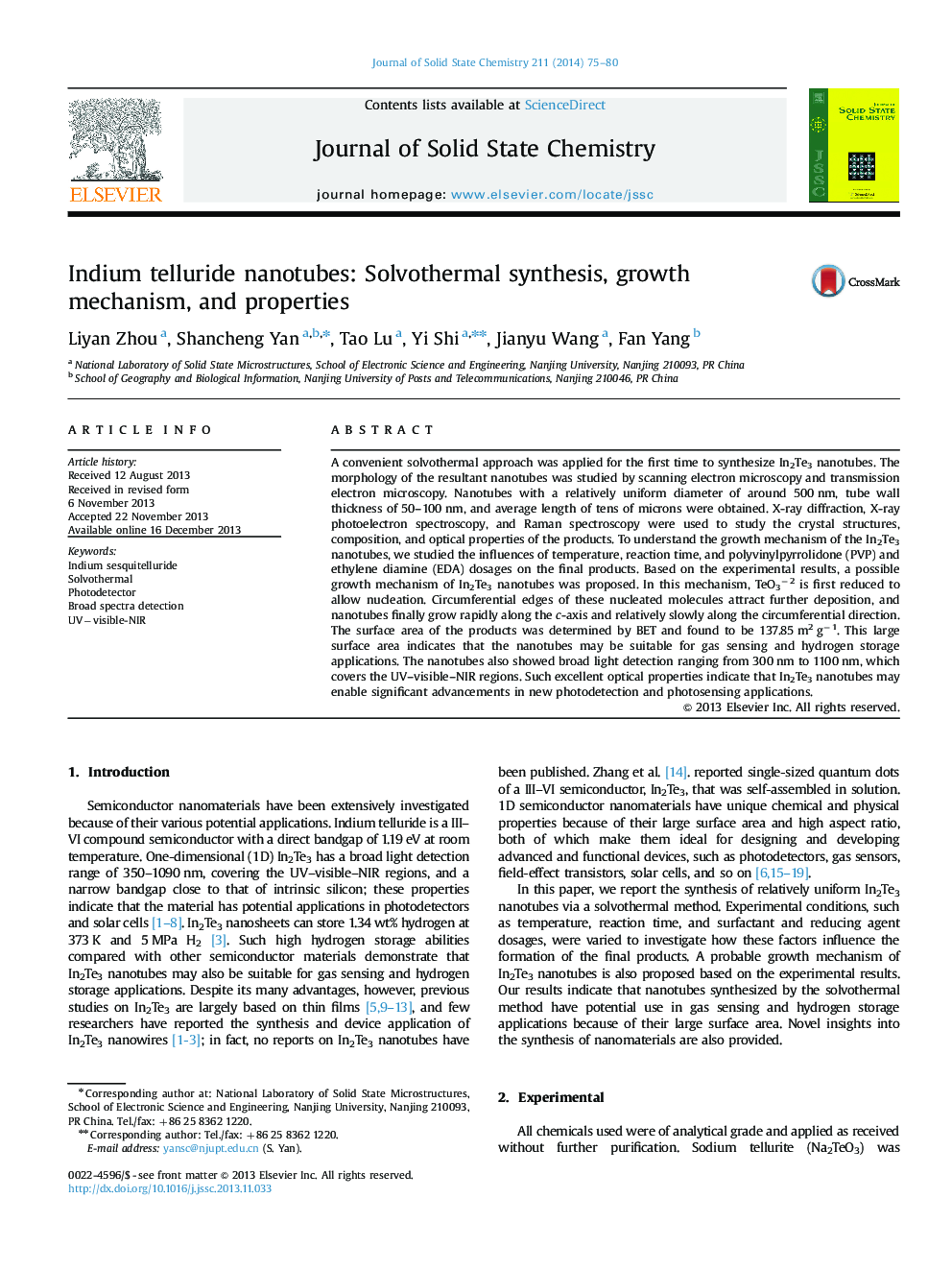| کد مقاله | کد نشریه | سال انتشار | مقاله انگلیسی | نسخه تمام متن |
|---|---|---|---|---|
| 1329011 | 1500105 | 2014 | 6 صفحه PDF | دانلود رایگان |

• The In2Te3 nanotube device also has a broad light detection range from 300 nm to 1100 nm.
• The nanotube is 137.85 m2 g−1, which makes it suitable for gas sensing and hydrogen storage.
• A possible growth mechanism of the indium telluride nanotubes was proposed.
• In addition, no In2Te3 nanotubes have been reported until now.
A convenient solvothermal approach was applied for the first time to synthesize In2Te3 nanotubes. The morphology of the resultant nanotubes was studied by scanning electron microscopy and transmission electron microscopy. Nanotubes with a relatively uniform diameter of around 500 nm, tube wall thickness of 50–100 nm, and average length of tens of microns were obtained. X-ray diffraction, X-ray photoelectron spectroscopy, and Raman spectroscopy were used to study the crystal structures, composition, and optical properties of the products. To understand the growth mechanism of the In2Te3 nanotubes, we studied the influences of temperature, reaction time, and polyvinylpyrrolidone (PVP) and ethylene diamine (EDA) dosages on the final products. Based on the experimental results, a possible growth mechanism of In2Te3 nanotubes was proposed. In this mechanism, TeO3−2 is first reduced to allow nucleation. Circumferential edges of these nucleated molecules attract further deposition, and nanotubes finally grow rapidly along the c-axis and relatively slowly along the circumferential direction. The surface area of the products was determined by BET and found to be 137.85 m2 g−1. This large surface area indicates that the nanotubes may be suitable for gas sensing and hydrogen storage applications. The nanotubes also showed broad light detection ranging from 300 nm to 1100 nm, which covers the UV–visible–NIR regions. Such excellent optical properties indicate that In2Te3 nanotubes may enable significant advancements in new photodetection and photosensing applications.
A convenient solvothermal approach was applied to synthesize In2Te3 nanotubes, which has not been reported in the literature for our knowledge. Surface area of this material is 137.85 m2 g−1 from the BET testing, and such a high value makes it probably suitable for gas sensing and hydrogen storage, compared with the nanowires. The nanotube device also has a broad light detection range from 300 nm to 1100 nm, covering the UV–visible–NIR region. This good performance of In2Te3 nanotubes may enable significant advancements of new photodetection and photosensing applications. Figure optionsDownload as PowerPoint slide
Journal: Journal of Solid State Chemistry - Volume 211, March 2014, Pages 75–80